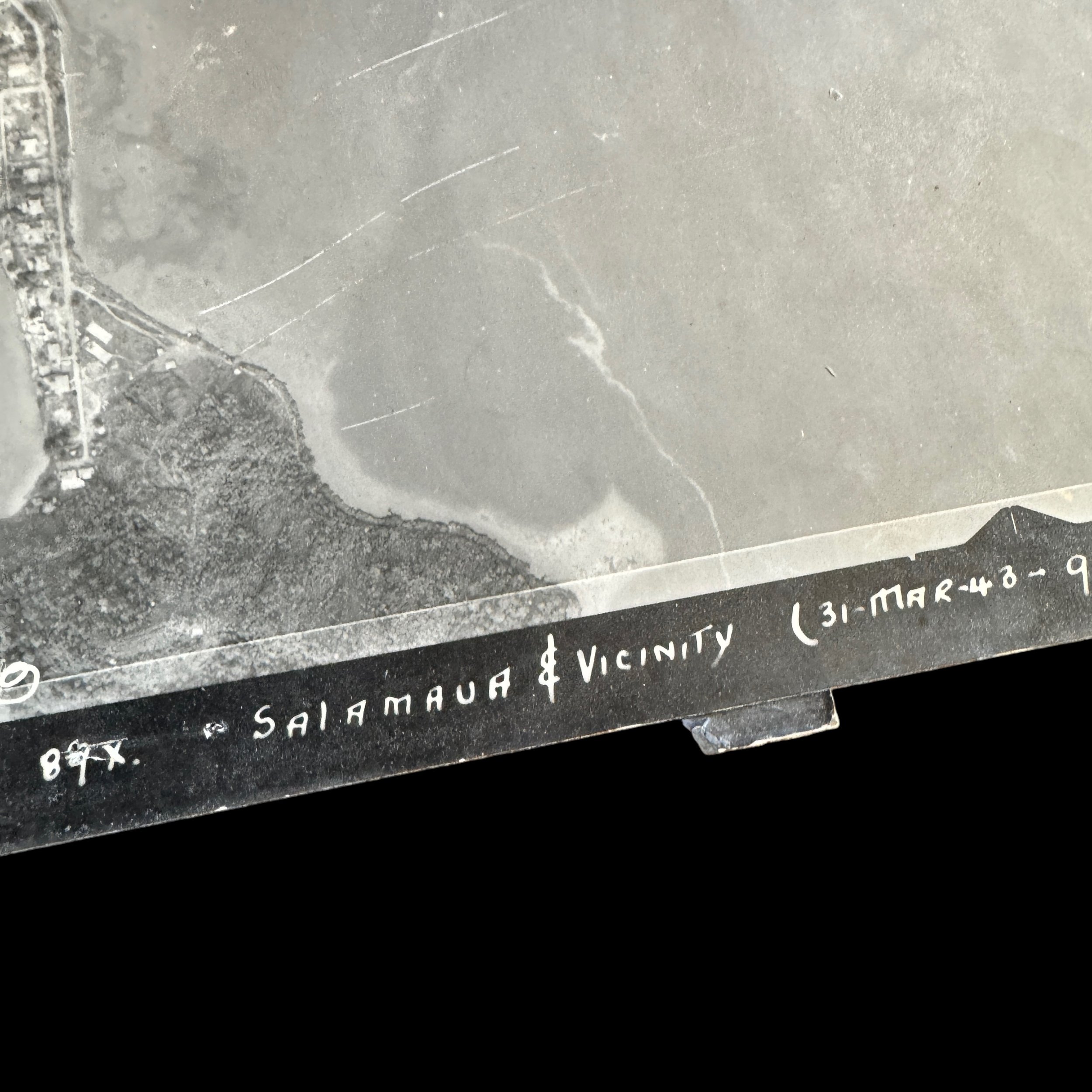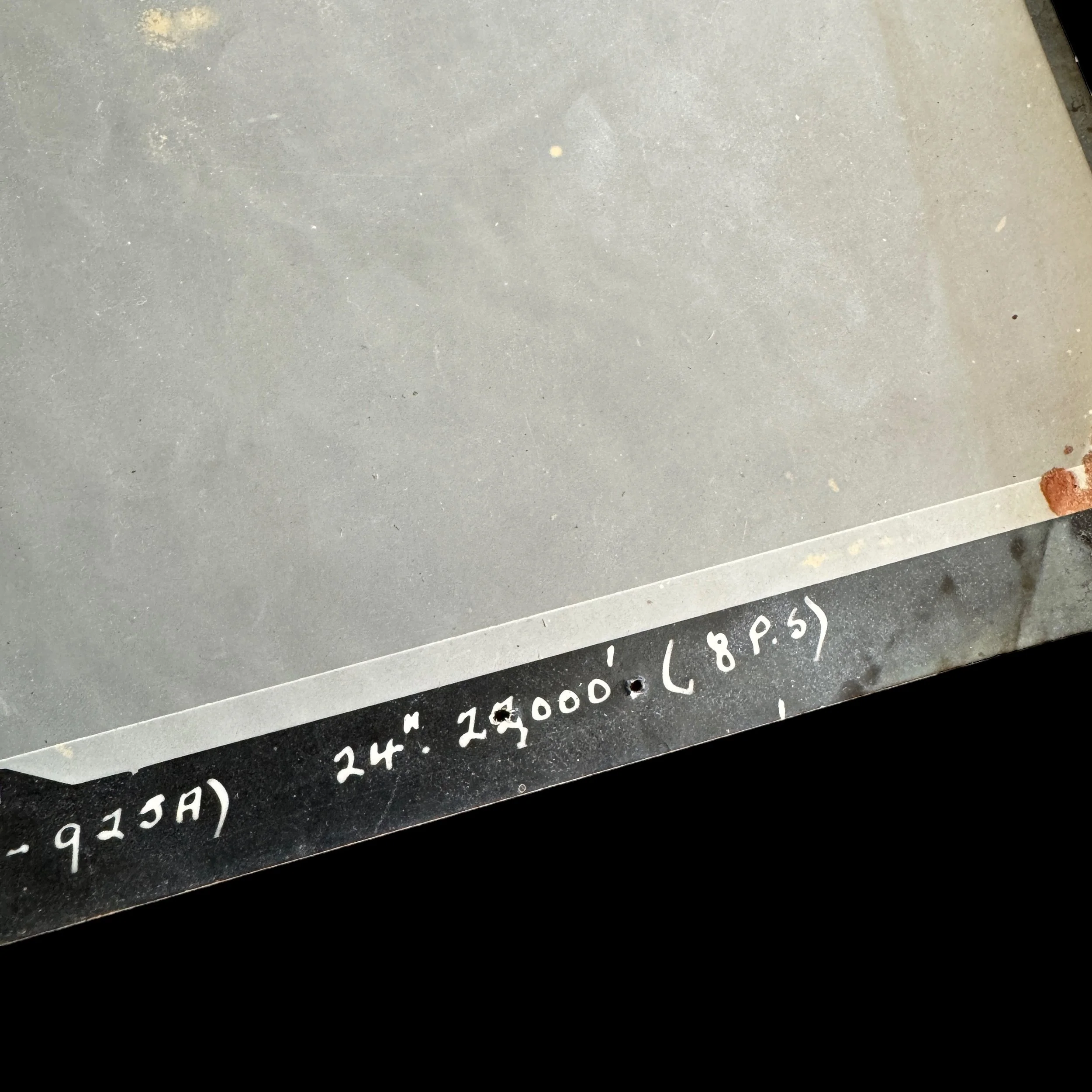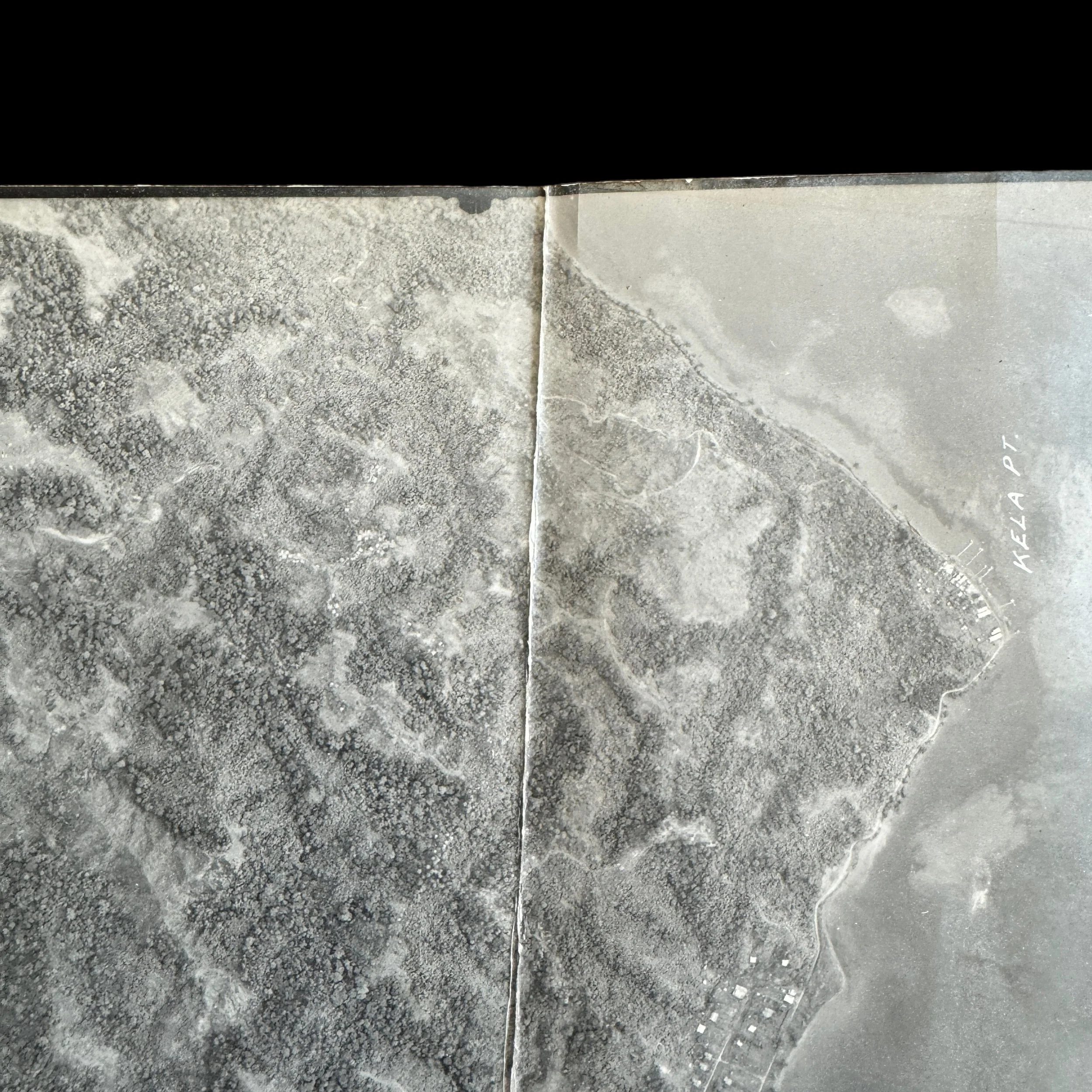RARE! WWII New Guinea Campaign 8th Photo Recon Squadron 5th Air Force F-4 Lightning Salamaua–Lae Campaign Combat Aerial Photograph
























RARE! WWII New Guinea Campaign 8th Photo Recon Squadron 5th Air Force F-4 Lightning Salamaua–Lae Campaign Combat Aerial Photograph
Comes with a hand-signed C.O.A.
Original one-of-one “TYPE ONE” photograph used to create secret, confidential and restricted aerial maps and target documentation for combat missions.
This extremely rare and museum-grade WWII artifact is an original “TYPE-ONE” aerial combat photograph (panoramic type) taken by F-4 Lightning pilots of the infamous 8th Photo Reconnaissance Squadron (Eight Ballers) during an aerial mission in the Pacific Theater.
The 8th Photographic Reconnaissance Squadron (8th PRS) operated under the U.S. Army Air Force (USAAF), specifically part of the 5th Air Force and the 6th Photographic Reconnaissance Group (6th PRG). Referred to as the 8th Photographic Squadron, 8th Photo Recon Squadron, or 8th Photo Recon, the unit was initially outfitted with the F-4 Lightning, a specialized photographic reconnaissance variant of the P-38 Lightning. Camera equipment was installed in the nose section in lieu of traditional armaments. Conducting missions above Japanese-held territories and airfields, the squadron captured vital imagery utilized in the creation of aerial maps and target intelligence for subsequent combat operations. These reconnaissance flights were inherently perilous, with pilots often flying solitary missions through adverse weather conditions and challenging navigation circumstances. While over target areas, pilots maintained a steady flight path at lower altitudes to ensure high-quality photographic results, braving risks such as anti-aircraft artillery and potential interception by enemy planes. In later operations, F-4s received protective escort by armed P-38 Lightnings to enhance their defensive capabilities.
The 8th PRS, also known as the 8th Photo Reconnaissance Squadron, earned a renowned reputation for its exceptional service during campaigns across various regions including the East Indies, Japan, China, Papua, Guadalcanal, New Guinea, Northern Solomons, and Bismarck.
This incredibly rare and one-of-one original 1943 dated aerial combat mission photograph shows the area of SALAMAUA & VICINITY (Samoa Harbor) - New Guinea. SALAMAUA missions are documented in the book The Eightballers: Eyes of the Fifth Air Force - The 8th Photo Reconnaissance Squadron in WWII by John Stanaway and Bob Rocker…”Foster flew 2130 to the following places with photographic success. Lae, BUlla, Salamaua, and a mapping strip of the Yodda River. Thomas picked up lots of mapping for us on a three-hour afternoon hop.”
The Salamaua–Lae campaign and the broader New Guinea Operations were pivotal engagements during World War II, often overshadowed by more well-known battles in Europe and the Pacific. However, these campaigns were instrumental in halting Japanese expansion in the South Pacific and ultimately turning the tide of the war in favor of the Allies. This essay will explore the strategic significance, key events, and lasting impacts of these campaigns.
The Salamaua–Lae campaign took place in 1943, as part of the New Guinea Campaign, which aimed to secure the northern coast of New Guinea and protect Australia from Japanese invasion. The Japanese had invaded New Guinea in 1942, capturing the key towns of Lae and Salamaua, and were threatening to advance further south. Recognizing the strategic importance of New Guinea, the Allies launched a counteroffensive to push the Japanese back and regain control of the region.
The campaign can be divided into several distinct phases. The first phase began in late 1942, with Allied forces conducting reconnaissance and gathering intelligence on Japanese positions in New Guinea. This phase culminated in the Battle of Buna–Gona, where Australian and American troops fought fierce battles against entrenched Japanese forces. Despite heavy casualties and difficult conditions, the Allies managed to secure victory, marking the beginning of the end for Japanese expansion in New Guinea.
Following the success at Buna–Gona, the focus shifted to the Salamaua–Lae area, where the Japanese had established strong defensive positions. The second phase of the campaign commenced in early 1943, with Allied forces launching amphibious assaults on the northern coast of New Guinea. The Battle of Salamaua and the Battle of Lae were hard-fought engagements, characterized by intense jungle warfare and fierce resistance from the Japanese. However, superior Allied firepower and strategic planning ultimately led to the capture of both towns, dealing a significant blow to Japanese ambitions in the region.
The final phase of the Salamaua–Lae campaign involved mopping up operations and securing the surrounding area. This phase lasted until mid-1943 and saw Allied forces consolidating their gains, building infrastructure, and preparing for further advances. By the end of the campaign, the Allies had succeeded in pushing the Japanese back and securing the northern coast of New Guinea, setting the stage for future offensives in the Pacific theater.
The New Guinea Operations as a whole were characterized by the harsh and unforgiving environment of the jungle, which presented significant challenges to both sides. The dense vegetation, rugged terrain, and tropical diseases made movement difficult and combat even more challenging. Both Allied and Japanese troops had to contend with these obstacles while also facing determined enemy resistance.
Despite the difficulties, the New Guinea Operations were a strategic success for the Allies. By securing New Guinea, they were able to protect Australia from further Japanese aggression and establish a base for future offensives in the Pacific. Additionally, the campaigns in New Guinea diverted Japanese resources away from other fronts, weakening their overall war effort and contributing to their eventual defeat.
The Salamaua–Lae campaign and the broader New Guinea Operations also had significant long-term impacts. The experience gained by Allied forces in jungle warfare proved invaluable in subsequent campaigns in the Pacific, notably in the battles for the Solomon Islands and the Philippines. Furthermore, the successful defense of New Guinea bolstered Allied morale and confidence, demonstrating their ability to overcome formidable challenges and achieve victory against a determined enemy.
In conclusion, the Salamaua–Lae campaign and the New Guinea Operations were critical chapters in the history of World War II. Through courage, perseverance, and strategic skill, Allied forces were able to push back the Japanese advance, secure vital territory, and pave the way for ultimate victory in the Pacific. These campaigns stand as a testament to the bravery of those who fought and the importance of cooperation and determination in the face of adversity.